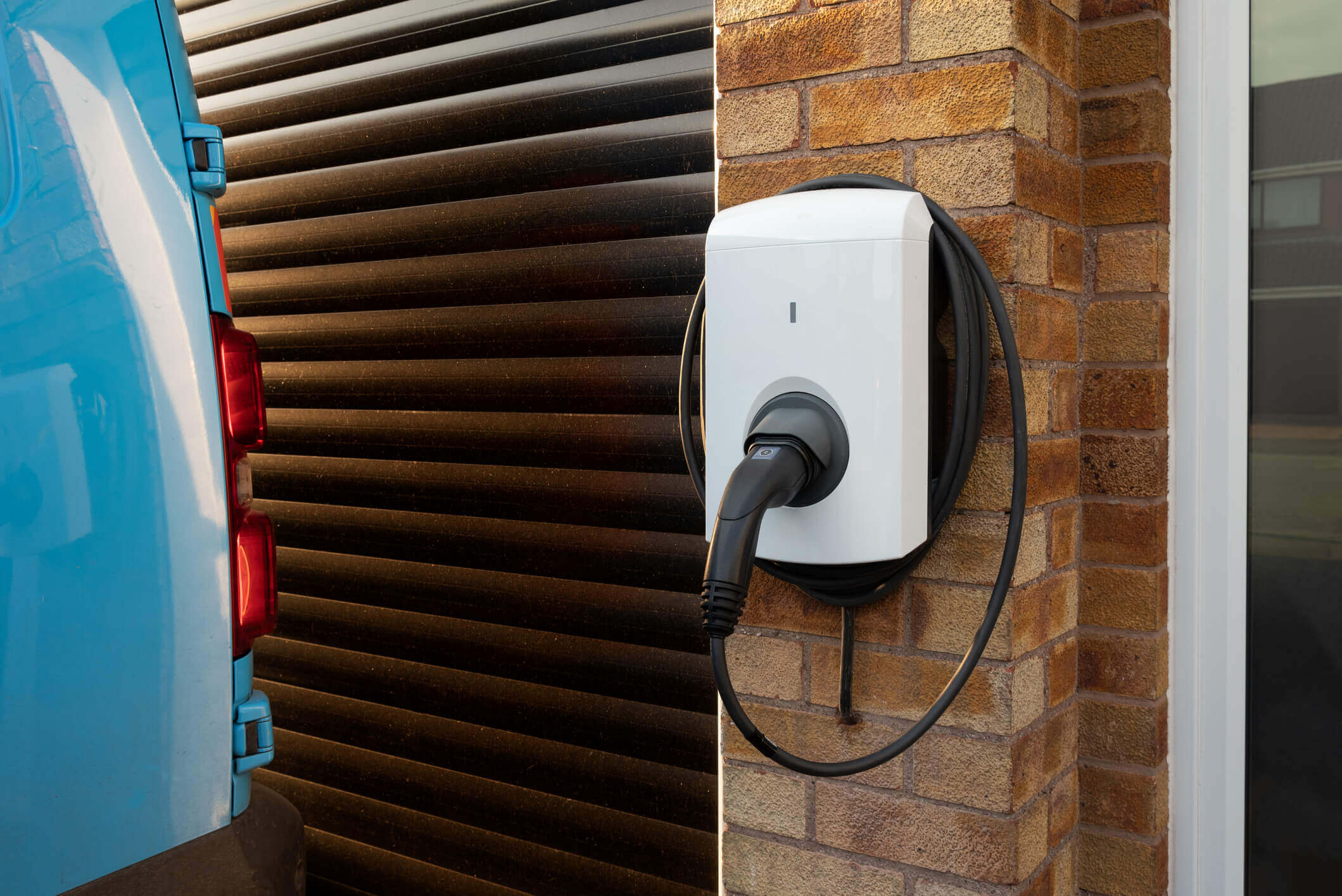Can your business generate its own electricity to save money?
From towering wind turbines to rows of solar panels, renewable energy solutions are on the rise — particularly for businesses. In fact, research from NatWest found that 7% of SMEs are already investing in onsite green energy generation but this number could double in 2023.
And for those who have the time and potentially some money to invest, installing green energy solutions can produce longer-term savings while helping to ease the burden on the environment.
To get your business set on its green and clean journey, our Bionic guide is here to help walk you through what it means to ‘go green’ and self-generate power to run your business.

Five-point summary
- All types of businesses can invest in renewable energy systems that allow them to generate their own electricity to power their business. Businesses can choose a renewable technology that best suits their business, including wind, solar, hydro and biomass.
- Businesses that invest in renewable energy reap a range of benefits including energy independence, long-term cost savings, energy security, improved brand perception and environmental sustainability. It also helps lower our nation's carbon footprint, improves the air quality and protects our natural resources.
- The initial cost of self-generated energy systems can vary based on the generation method, the scale of the project, the location and the available resources. But eventually, businesses will be able to pay off the initial investment.
- Government schemes like the Smart Export Guarantee allow businesses to sell the excess renewable energy they generate back to the grid. There are also other government incentives for relief on the green taxes all businesses have to pay.
- There are several financial incentives available to businesses that generate their own electricity. This includes making money via the Smart Export Guarantee (SEG) along with certain tax incentives.
What does it mean to generate your own electricity?
Generating your own electricity refers to producing electrical energy on-site using various technologies and resources instead of solely relying on external electricity providers like utility companies.
Self-generated electricity is often called ‘onsite power generation’ or ‘distributed generation’. It involves setting up infrastructure to produce, manage, and utilise electricity for your business's needs.
In 2024, 36.7% of electricity came from renewable energy sources. This was mostly thanks to additional wind generation due to more offshore wind farms and higher wind speeds. Although still a relatively high percentage of power production, it's down on the 2022 record figure of 40%.
How can businesses generate their own electricity?
There are a few different ways that your business can generate its own electricity. But not all systems will be suitable for all. Hydropower, for example, is only suitable for businesses located near running water. Here is a rundown of the options to consider:
Solar
Solar panels — also known as photovoltaics (PV) — are one of the most common renewable energy sources. You’ll probably have already seen them across buildings and homes alike, as they’re easy to install and can be fitted onto the side of the premises.
Solar panels capture the sun's energy using photovoltaic cells. This means that when light shines on the material, it knocks the electrons apart, which creates a flow of electricity. Luckily for UK businesses, the cells don’t need direct sunlight to generate electricity since they can even operate on cloudy days! But, the stronger the beams from the sun, the more electricity that’ll be generated.
On average, solar panels suitable for micro businesses can cost anywhere between £6,000 - £11,000, with larger systems costing anywhere from £16,000 - £70,000. This sounds like a hefty initial investment, but it can pay off in the long run.
Wind
Wind energy is a form of renewable energy derived from the kinetic energy of moving air or wind. This energy is harnessed and converted into electricity using wind turbines or windmills consisting of large blades attached to a rotor, which is connected to a generator.
As the wind blows, it causes the blades to spin, rotating the rotor and generating mechanical energy. This mechanical energy is then turned into electrical energy through the generator.
This type of energy isn’t really suitable if your business operates in a built-up area, such as in the middle of a city centre. But if your company is in an isolated or exposed spot, you could reap the rewards.
Smaller turbines generating around 2,000 kWh per year can cost between £2,000-£6,000, while installing a bigger unit can see prices of £20,000 up to £3.3 million. Larger models generate much more power, so they don't take as long to pay back, even though they cost more to install.
Biomass energy
Biomass energy is another popular form of renewable energy. Wood-fuelled heating systems, also known as biomass systems, burn wood pellets, logs or chips to power central heating and hot water boilers.
An ordinary commercial biomass boiler installed to heat two or more buildings can cost around £20,000.
Hydropower
Hydropower, also known as hydroelectricity, is one of the oldest and most widely used sources of renewable energy, dating back centuries to water mills used for grinding grain. In modern times, hydropower has been scaled up to produce electricity on a larger scale by using dams and turbines.
Hydropower harnesses the energy of flowing water to generate electricity, often producing enough electrical power for both lighting and electrical appliances.
Micro-hydro systems for small businesses cost around £4,000 per kW installed. A typical micro-hydro system with standard costs would be around £20,000 - £25,000 for a 5 kW unit.
The estimated cost to build a larger hydropower system that has a maximum power output of 50 kW is £6,000 for installation and an estimated project cost of £300,000.
What are the benefits of generating your own electricity?
Businesses that generate their own electricity can reap a wide range of benefits that go beyond relying solely on existing suppliers.
- Cost savings — Generating your own electricity can lead to high cost savings over time. By using renewable energy sources or more efficient technologies, businesses can reduce their dependence on fluctuating utility rates and potentially even get rid of electricity bills altogether.
- Energy independence — On-site power generation reduces reliance on The National Grid and gives businesses greater control over their energy supply. This, in turn, lessens the risk of grid failures, supply disruptions, or geopolitical tensions that could impact energy imports.
- Environmental sustainability — Businesses that generate their own electricity through renewable sources contribute to environmental sustainability by cutting down fossil fuels and greenhouse gas emissions. This aligns with corporate social responsibility and shows a commitment to combating climate change.
- Energy security — On-site power generation acts as a backup during grid outages, ensuring operations keep going even if there is an issue with the external power supply. This is crucial for industries where operations are constant, such as hospitals and data centres. But it’s also useful for SMEs to have a backup supply in case of power cuts - especially during the mid-morning coffee rush at a cafe, for example.
- Hedging against price volatility — Changes in energy prices can have a big impact on a business's operating costs. Generating your own electricity can lessen this, providing more stable energy costs and making it easier to budget.
- Public branding and image — Adopting sustainable practices can improve a business's public image. Customers, investors, and stakeholders often view environmentally conscious companies more favourably, which can lead to increased brand loyalty and better market value. But you have to make sure this is done for the right reasons, or your business may be accused of greenwashing.
How can a UK business start generating its own electricity?
If you want to start generating electricity at your business, the following checklist will help:
Assess your energy needs and site suitability
To begin generating electricity at your business, start by reviewing how much electricity your business uses. This helps you understand the scale of the system you’ll need. Then assess your premises to identify suitable areas for installation. Rooftops, open land, or access to flowing water can all be valuable depending on your chosen technology.
Choose a generation technology
There are several renewable technologies to consider. Solar panels are a popular choice for businesses with available roof or ground space. Wind turbines may be suitable for properties in exposed, windy locations. Biomass systems work well for businesses that produce organic waste. Hydropower is an option if you have access to flowing water. Combined heat and power (CHP) systems are a good fit for businesses that need both heat and electricity.
Check permissions and regulations
Before you install anything, check whether you need planning permission—this depends on the size and type of system. If you plan to connect your system to the grid, you’ll need to apply to your local Distribution Network Operator (DNO). For smaller systems, ensure your installation meets the standards set by the Microgeneration Certification Scheme (MCS), especially if you want to access financial incentives.
Explore funding and incentives
You may be able to offset some of the costs with financial support. If you plan to export electricity back to the grid, you can apply for payments through the Smart Export Guarantee (SEG). Tax relief through capital allowances may also be available. Some businesses can access local or national grants and loans. Alternatively, you might consider third-party financing options such as Power Purchase Agreements (PPAs).
Choose a certified installer
For peace of mind and to ensure eligibility for schemes like SEG, it’s important to hire a certified installer. Choose an MCS-certified installer or someone certified by another recognised body to ensure your system is safe, efficient, and compliant. Select an
Install and connect the system
Once you’ve chosen your installer, the next step is installation. Your installer will fit the system and connect it to your business’s energy supply. If you’re exporting to the grid, they’ll also handle the connection to the network via your DNO.
Monitor and maintain
After installation, it’s important to monitor how your system is performing. Set up monitoring tools to track how much electricity you’re generating and saving. Regular maintenance is also essential to keep the system running smoothly and efficiently over time.
How much will it cost to set up your own energy infrastructure?
The cost of generating your own electricity as a business can vary widely based on several factors, including things like your energy generation method, the scale of the project, location and the available resources.
Some key points that can influence the overall cost include:
- Energy generation method — The type of energy generation method you choose will have a big impact on costs. Solar power, wind power, biomass, hydroelectric power, and other methods have different upfront costs and ongoing expenses.
- System size — Size does matter when it comes to the system that you’re going to choose. The capacity of the energy generation system will affect costs — larger systems tend to have higher upfront expenses but can also generate more electricity.
- Installation costs — The price that comes with installing the equipment, including labour, engineering, permitting, and site preparation, all add to the overall costs.
- Location — Your business's location has an impact, as solar and wind resources, local regulations and government incentives can vary from one region to another.
- Maintenance and operation — Ongoing maintenance, repairs, and operational expenses over the system's lifespan need to be considered and factored in.
- Energy storage — If you want to store excess energy for use during low-generation periods, such as with solar or wind energy, the cost of energy storage technology (batteries, pumped storage, etc.) should be considered.
How long will it take to recoup the investment in self-generated electricity?
The time it takes to recoup the investment in self-generated electricity varies widely based on several factors. As a rough guideline, payback periods for self-generated electricity projects can vary from several years to a decade or more.
Depending on the factors mentioned above and the scale of your system, solar panels will likely have a payback period between five to ten years, while other systems might have shorter or longer payback periods.
What are the environmental benefits of self-generated electricity?
Self-generated electricity helps to contribute to a more sustainable world, and has the following benefits:
- Reduced greenhouse gas emissions — Generating electricity from renewable sources like solar, wind, and hydropower produces little to no direct greenhouse gas emissions. This significantly reduces the carbon dioxide and other pollutants that contribute to climate change and global warming.
- Lower carbon footprint — By relying on clean energy sources, businesses can significantly reduce their carbon footprint, which is the total amount of greenhouse gas emissions produced throughout their operations. The lower your carbon footprint, the better it is for the environment.
- Improved air quality — Self-generated electricity from renewables doesn't release pollutants that worsen air quality, such as sulfur dioxide, nitrogen oxides, and particulate matter. This leads to cleaner air, better public health, and reduced respiratory illnesses.
- Biodiversity protection — Some conventional energy production methods, like fossil fuel extraction, can harm ecosystems and threaten biodiversity. Renewable energy projects, when properly designed and sited, have a lower impact on habitats and ecosystems, helping to protect biodiversity.
- Conservation of natural resources — Self-generated electricity relies on renewable resources like sunlight, wind, and water, which are naturally replenished over time. This reduces the pressure on finite fossil fuel resources and helps conserve natural resources for future generations.
- Adaption to climate change measures — The shift to self-generated clean energy contributes to global efforts towards climate change. As businesses transition to renewable energy sources, they help reduce the devastating effects of climate-related events like more frequent and intense heatwaves, storms, and rising sea levels.
Are there any regulations in place in the UK when generating your own electricity?
Yes, there are regulations and policies in place in the UK for businesses and individuals generating their own electricity.
The UK government has established a framework to promote renewable energy generation, energy efficiency, and sustainable practices. These regulations aim to ensure safety, grid compatibility, environmental protection, and fair compensation for energy produced, meaning you can sell electricity back to the grid.
Are there financial incentives for UK businesses to generate their own electricity?
There are several financial incentives for UK businesses that generate their own electricity through renewable sources. These include:
- Smart Export Guarantee (SEG) - Introduced on January 1, 2020, the SEG replaced the Feed-in Tariff. Offered by larger energy suppliers, this scheme pays households and businesses for any extra electricity they generate and export to the grid. The rates can vary and are determined by the suppliers.
- Grants and loans - Various grants and financing schemes are available to help businesses set up renewable energy solutions. For instance, the UK government offers financial support for energy efficiency investments, which can help reduce carbon emissions and lower energy costs.
- Tax incentives - business rates are exempt for eligible plant and machinery used in onsite renewable energy generation and storage until 2035. This includes rooftop solar panels, wind turbines, and battery storage.
These incentives aim to support businesses in reducing their energy costs and carbon footprint. For more information on specific incentives and to keep up to date with any changes, speak with financial advisors or relevant authorities.
Get your business set with Bionic
We know not all businesses will be able to install renewable energy systems, but those who do may be able to get some relief from green taxes.
If you need more advice on renewables or help understanding business energy, head over to our energy guide pages for more information. Or, get in touch today with the Bionic team to compare your business energy needs, including electricity and gas. Just enter your business postcode in the sidebar to the right to get started.








